【Tool】Augmentor和imgaug——python图像数据增强库
Augmentor和imgaug——python图像数据增强库
Tags: ComputerVision Python
介绍两个图像增强库:Augmentor和imgaug,Augmentor使用比较简单,只有一些简单的操作。 imgaug实现的功能更多,可以对keypoint, bounding box同步处理,比如你现在由一些标记好的数据,只有同时对原始图片和标记信息同步处理,才能有更多的标记数据进行训练。我在segmentation和detection任务经常使用imgaug这个库。
Augmentor
http://augmentor.readthedocs.io/en/master/index.html
Augmentor 是管道化的图像增强库,每一个增强操作都是逐步叠加在图像上。此外对于输入的图像,可以选择按照一定的概率进行增强,比如只随机对一半图像进行旋转。
rotate(probability=0.5, max_left_rotation=5, max_right_rotation=10)
可以实现的操作有, rotate, crop, perspective skew(视角倾斜), elastic distortions(弹性变换), sheering(坐标轴倾斜), mirroring(镜像)
可以使用Augumentor.Pipeline()创建一个实例,调用各种方法向pipeline添加方法, status()可以显示当前pipeline的状态,在status中每个操作都有一个对应的index, remove_operation(index)移除一个操作, 最后调用sample(nums)得到nums个augument后的图像。
import Augmentor
p = Augmentor.Pipeline("/path/to/images/")
p.status()
p.remove_operation(0)
rotate
- rotate() 旋转,非90度旋转会带来padding或者裁剪
- rotate90()
- rotate180()
- rotate270()
- rotate_random_90() 随机旋转,90, 180, 270
resize
crop
- crop_centre()
- crop_by_size()
- crop_random()
sheer
+ sheer()
mirroring
- flip_left_right()
- flip_top_bottom()
- flip_random()
elastic distortion
- random_distortion()
Before
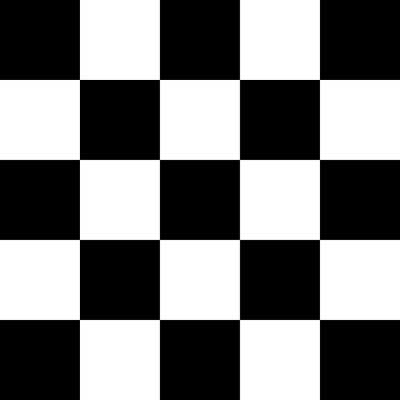
After
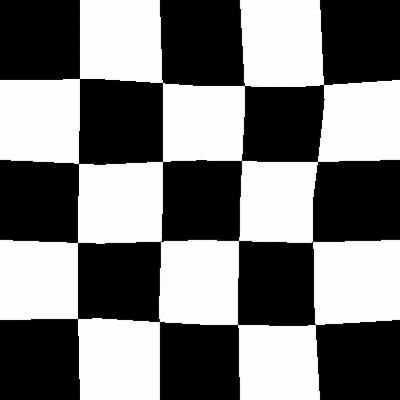
弹性变换是在计算机视觉任务中经常使用的一种变换,比较有名的Segmentation Model U-Net就使用了elastic deformation来对自己的数据做Augmentation.最后取得了较好的效果.
imgaug
http://imgaug.readthedocs.io/en/latest/index.html
安装
依赖
- numpy
- scipy
- scikit-image (pip install -U + scikit-image)
- six (pip install -U six)
- OpenCV (i.e. cv2 must be available in python). The library is mainly tested in OpenCV 2, but seems to also work in OpenCV 3.
pip install git+https://github.com/aleju/imgaug
或者
pip install imgaug
前者安装github最新版本,后者安装pypi版本。
basic
Keypoint
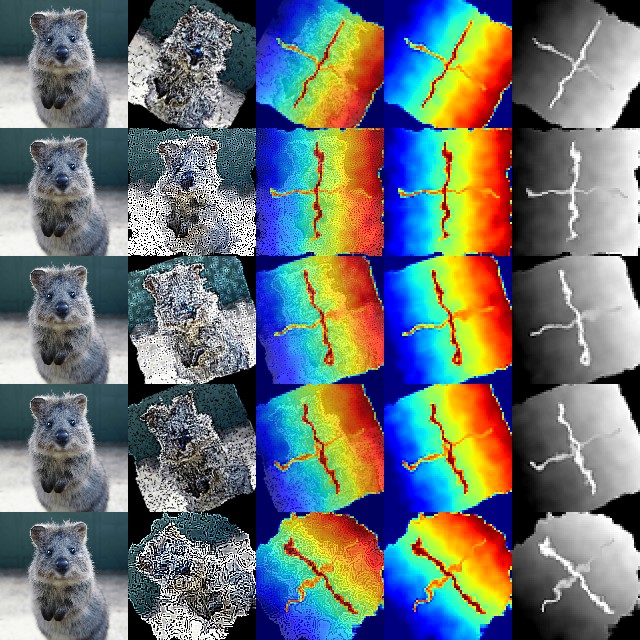
Bounding Boxes
这个部分做object detection的人应该经常用到。
imgaug支持:
- 将bounding boxes作为对象表示
- 增强boundiing boxes
- 在图像上画bounding boxes
- boxing boxes移动, 映射, 计算IoU
Before
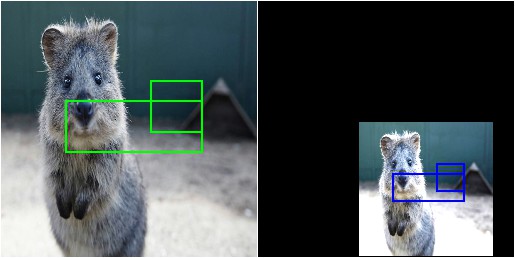
After
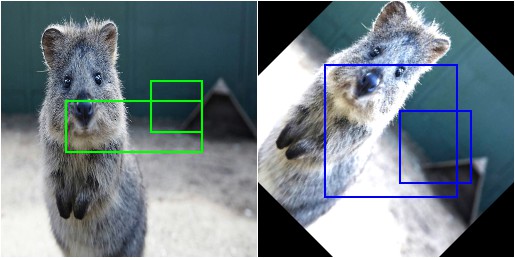
由于VOC_PASCAL是在分割和检测领域常见的数据集,这里给出一个使用VOC_PASCAL标记格式进行数据增强的例子。
标记格式:
<?xml version="1.0" ?>
<annotation>
<folder>Pictures</folder>
<filename>bndbox.jpg</filename>
<path>/home/redtea/Pictures/bndbox.jpg</path>
<source>
<database>Unknown</database>
</source>
<size>
<width>1200</width>
<height>1200</height>
<depth>3</depth>
</size>
<segmented>0</segmented>
<object>
<name>cat</name>
<pose>Unspecified</pose>
<truncated>0</truncated>
<difficult>0</difficult>
<bndbox>
<xmin>49</xmin>
<ymin>647</ymin>
<xmax>599</xmax>
<ymax>1125</ymax>
</bndbox>
</object>
<object>
<name>dog</name>
<pose>Unspecified</pose>
<truncated>0</truncated>
<difficult>0</difficult>
<bndbox>
<xmin>678</xmin>
<ymin>547</ymin>
<xmax>1159</xmax>
<ymax>1159</ymax>
</bndbox>
</object>
</annotation>
import xml.etree.ElementTree as ET
import pickle
import os
from os import getcwd
import numpy as np
from PIL import Image
import cv2
import imgaug as ia
from imgaug import augmenters as iaa
ia.seed(1)
def read_xml_annotation(root,image_id):
in_file = open(os.path.join(root,image_id))
tree = ET.parse(in_file)
root = tree.getroot()
bndbox = root.find('object').find('bndbox')
xmin = int(bndbox.find('xmin').text)
xmax = int(bndbox.find('xmax').text)
ymin = int(bndbox.find('ymin').text)
ymax = int(bndbox.find('ymax').text)
return (xmin, ymin, xmax, ymax)
def change_xml_annotation(root, image_id, new_target):
new_xmin = new_target[0]
new_ymin = new_target[1]
new_xmax = new_target[2]
new_ymax = new_target[3]
in_file = open(os.path.join(root, str(image_id)+'.xml')) #这里root分别由两个意思
tree = ET.parse(in_file)
xmlroot = tree.getroot()
object = xmlroot.find('object')
bndbox = object.find('bndbox')
xmin = bndbox.find('xmin')
xmin.text = str(new_xmin)
ymin = bndbox.find('ymin')
ymin.text = str(new_ymin)
xmax = bndbox.find('xmax')
xmax.text = str(new_xmax)
ymax = bndbox.find('ymax')
ymax.text = str(new_ymax)
tree.write(os.path.join(root,str(image_id)+"_aug"+'.xml'))
if __name__ == "__main__":
cmd = os.getcwd()
image_id = "bndbox"
img = Image.open(os.path.join(cmd, str(image_id)+'.jpg'))
img = np.array(img)
bndbox = read_xml_annotation(cmd, str(image_id)+'.xml')
bbs = ia.BoundingBoxesOnImage([
ia.BoundingBox(x1=bndbox[0], y1=bndbox[1], x2=bndbox[2], y2=bndbox[3])
], shape=img.shape)
seq = iaa.Sequential([
iaa.Flipud(0.5), # vertically flip 20% of all images
iaa.Multiply((1.2, 1.5)), # change brightness, doesn't affect BBs
iaa.Affine(
translate_px={"x": 10, "y": 10},
scale=(0.8, 0.95),
rotate=(-10,10)
) # translate by 40/60px on x/y axis, and scale to 50-70%, affects BBs
])
seq_det = seq.to_deterministic() # 保持坐标和图像同步改变,而不是随机
image_aug = seq_det.augment_images([img])[0]
bbs_aug = seq_det.augment_bounding_boxes([bbs])[0]
before = bbs.bounding_boxes[0]
after = bbs_aug.bounding_boxes[0]
print("BB : (%.4f, %.4f, %.4f, %.4f) -> (%.4f, %.4f, %.4f, %.4f)" % (
before.x1, before.y1, before.x2, before.y2,
after.x1, after.y1, after.x2, after.y2)
)
image_before = bbs.draw_on_image(img, thickness=2)
image_after = bbs_aug.draw_on_image(image_aug, thickness=2)
Image.fromarray(image_before).save("before.jpg")
Image.fromarray(image_after).save('after.jpg')
new_bndbox = []
new_bndbox.append(int(bbs_aug.bounding_boxes[0].x1))
new_bndbox.append(int(bbs_aug.bounding_boxes[0].y1))
new_bndbox.append(int(bbs_aug.bounding_boxes[0].x2))
new_bndbox.append(int(bbs_aug.bounding_boxes[0].y2))
# 修改xml tree 并保存
change_xml_annotation(cmd, image_id, new_bndbox)


这个包好像不能画出倾斜的bounding box, 我的read xml程序只能读取第一个bounding box,懒得修改了。
总之我觉得如果你Augmentor不能满足你就可以使用imgaug,但是有一点需要注意!imgaug中一些变换会给边缘区域带来黑色填充块,如果这些黑色填充块对你的模型有影响的话,就需要特殊处理!!
【Tool】Augmentor和imgaug——python图像数据增强库的更多相关文章
- Python库 - Albumentations 图片数据增强库
Python图像处理库 - Albumentations,可用于深度学习中网络训练时的图片数据增强. Albumentations 图像数据增强库特点: 基于高度优化的 OpenCV 库实现图像快速数 ...
- 图像数据增强 (Data Augmentation in Computer Vision)
1.1 简介 深层神经网络一般都需要大量的训练数据才能获得比较理想的结果.在数据量有限的情况下,可以通过数据增强(Data Augmentation)来增加训练样本的多样性, 提高模型鲁棒性,避免过拟 ...
- ubuntu为python处理图片安装图片数据增强库imgaug
1 依赖Required dependencies: six numpy scipy scikit-image (pip install -U scikit-image) OpenCV (i.e. c ...
- python的数据可视化库 matplotlib 和 pyecharts
Matplotlib大家都很熟悉 不谈. ---------------------------------------------------------------------------- ...
- Python的数据基础库Numpy怎样对数组进行排序
Numpy怎样对数组排序 Numpy给数组排序的三个方法: numpy.sort:返回排序后数组的拷贝 array.sort:原地排序数组而不是返回拷贝 numpy.argsort:间接排序,返回的是 ...
- Python数据可视化库-Matplotlib(一)
今天我们来学习一下python的数据可视化库,Matplotlib,是一个Python的2D绘图库 通过这个库,开发者可以仅需要几行代码,便可以生成绘图,直方图,功率图,条形图,错误图,散点图等等 废 ...
- 数据增强利器--Augmentor
最近遇到数据样本数目不足的问题,自己写的增强工具生成数目还是不够,终于在网上找到一个数据增强工具包,足够高级,足够傻瓜.想要多少就有多少!再也不怕数据不够了! 简介 Augmentor是一个Pytho ...
- 音频数据增强及python实现
博客作者:凌逆战 博客地址:https://www.cnblogs.com/LXP-Never/p/13404523.html 音频时域波形具有以下特征:音调,响度,质量.我们在进行数据增强时,最好只 ...
- python将xml文件数据增强(labelimg)
在处理faster-rcnn和yolo时笔者使用labelimg标注图片 但是我们只截取了大概800张左右的图,这个量级在训练时肯定是不够的,所以我们需要使用数据增强(无非是旋转加噪调量度)来增加我们 ...
随机推荐
- HDU 1198 Farm Irrigation (并查集优化,构图)
本题和HDU畅通project类似.仅仅只是畅通project给出了数的连通关系, 而此题须要自己推断连通关系,即两个水管能否够连接到一起,也是本题的难点所在. 记录状态.不断combine(),注意 ...
- WPF带cookie get/post请求网页,下载文件,图片,可保持会话状态
直接写成啦一个MyNet.cs类方便使用 get/post方法请求 //get请求 MyNet.SendRequest("http://www.baidu.com"); //pos ...
- 出错Can't convert 'WebElement' object to str implicitly
- C语言——什么是指针?
去年学C语言课时,初步了解了指针的概念,能看懂一些简单的含有指针的程序,但事实上对于指针并没有真正的弄明白它的使用,这点我在半年后的数据结构课程上才深刻的体会到和别人的差距.更加可怕的是,对于当时所得 ...
- 约瑟夫环问题的链表解法和数学解法(PHP)
约瑟夫环问题 一群猴子排成一圈.按1,2,-,n依次编号.然后从第1仅仅開始数,数到第m仅仅,把它踢出圈.从它后面再開始数,再数到第m仅仅.在把它踢出去-.如此不停的进行下去.直到最后仅仅剩下一仅仅猴 ...
- 0x58 数据结构优化DP
补写一下 poj3171 设f[i]表示覆盖L~i的最小花费,把区间按左端点排序,枚举区间,f[a[i].r]=min{f[a[i].l~(a[top].r-1)]}+a[i].c (当然还要和原值比 ...
- number随时间随机递增每天 不同 php(原创)
<?php namespace Controller; class IndexController{ public function getAutoRegUserName(){ $sql=&qu ...
- [ASPX] 模版引擎XTemplate与代码生成器XCoder(源码)
模版引擎XTemplate是一个仿T4设计的引擎,功能上基本与T4一致(模版语法上完全兼容T4,模版头指令部分兼容). 自己设计模版引擎,就是为了代码生成器.网站模版.邮件模版等多种场合,也就是要能拿 ...
- php的mcrypt
安装和使用php的mcrypt扩展 程序员们在编写代码程序时,除了要保证代码的高性能之外,还有一点是非常重要的,那就是程序的安全性保障.PHP除了自带的几种加密函数外,还有功能更全面的PHP加密扩展库 ...
- java基本数据类型(二)和分支结构
基本数据类型(四类八种):不能为null一.整数型 byte----2的8次方 short----2的16次方 int----2的32次方 long----2的64次方二.浮点型 float----4 ...
